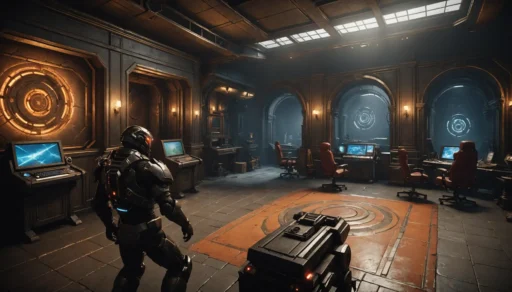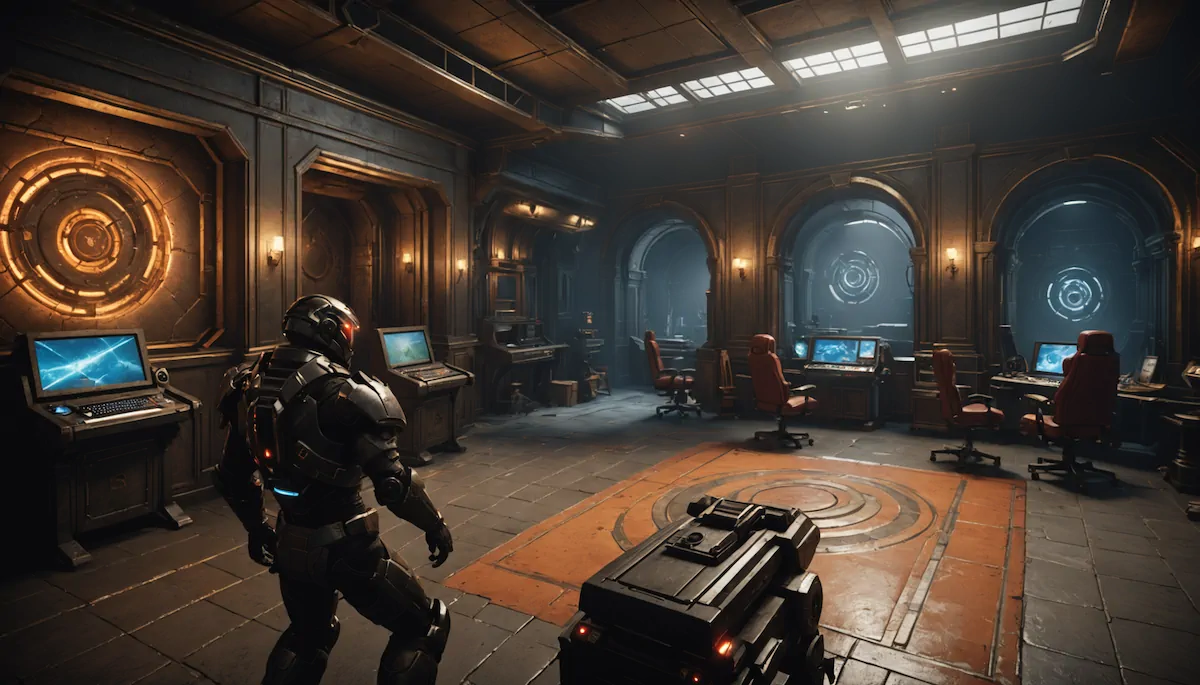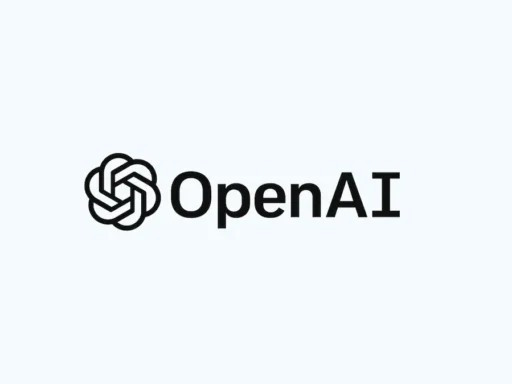Big question: What happens when a tech titan sinks current-gen AI tech into a ‘90s classic known for defining first-person shooters?
You get a Frankenstein’s monster that somehow feels original, smart, and eerily familiar. Microsoft just dropped a bombshell with its announcement of an AI-enhanced version of Quake—yes, that Quake.
For players who grew up dodging rocket blasts in dim corridors, this feels like a return home—but this time, the house thinks, adapts, and maybe even cheats better than your younger sibling ever did.
Microsoft didn’t pick Quake by accident. This game carved its way into gaming history with revolutionary engine tech and a competitive legacy that birthed esports arenas. Breathing new life into it isn’t nostalgia—it’s strategy.
Let’s unpack what makes this reboot feel less like a gimmick and more like a warning shot to traditional game studios still stuck in the mud of manual coding.
The Groundbreaking Project: Microsoft And Quake
The original Quake wasn’t just a game—it was a rupture in the way digital entertainment performed. Developed by id Software and launched back in 1996, Quake introduced full real-time 3D rendering at a time when blocky sprites were the norm.
Fast-forward nearly three decades, and Microsoft is turning that engine into a testbed for high-impact artificial intelligence tools. According to a joint press release from Microsoft Research and Xbox Game Studios, the AI-powered reboot aims to “demonstrate forward-compatible frameworks for future game development efficiency.”
Translation: they’re using Quake as ground zero to show the world what happens when you inject machine learning into old-school binary what-the-hell gameplay mechanics.
There’s a practical reason for this approach. Quake’s source code has been open since 1999. It’s stable. It’s modular. And most importantly, it has a loyal, vocal fanbase that’s ready to dissect every AI-generated texture and movement pixel by pixel.
Microsoft’s AI team utilized internal frameworks from their Azure AI platform, feeding Quake’s core engine through models trained on decades of FPS design data. Procedural content generation systems like Deep Reinforcement Learning (used in navigation AI) allowed enemies to learn your patterns, while generative diffusion models created entire levels with no human intervention whatsoever.
Here’s a quick breakdown of tools used behind the scenes:
| AI Tool | Application in Quake |
|---|---|
| Azure Cognitive AI | Real-time voice recognition and UI feedback |
| Project MoNet | NPC learning and adaptive behavior |
| Synapse GANs | Asset creation (textures, layouts) |
| Inverse Kinematics Engine | Physics and realistic model rigging |
Revolutionizing Game Development Through AI
Let’s pull back. Microsoft’s experiment with Quake isn’t just about nostalgia or flexing computational muscle. It’s a reflection of a bigger industry pivot: game development is becoming less about man-hours, more about model-hours.
AI isn’t just generating assets anymore. It’s making decisions.
Training neural networks to understand how humans play—and more importantly, how they misbehave—lets games morph based on what you do. AI’s fingerprints are now all over mission design, enemy difficulty, side quests, even weather systems.
- Need tighter level loops? Procedural generation AI draws layouts based on player psychology patterns.
- Want smarter enemies? Deep learning NPCs evolve mid-lobby, changing tactics if you keep camping corridors.
- Need voiceovers? Text-to-speech mimics Hollywood talent without the licensing licenses.
And here’s the kicker: development speed isn’t just faster—it’s exponential. What used to take a team of 12 artists and a crunch period now gets done by 2 designers with access to prompt-tuned GANs and reinforcement optimizers.
For indie teams, this isn’t just an unlock—it’s a lifeline. Studios can stretch budget into better QA, storytelling, and gameplay refinement. Gone are the days of scripting one-dimensional knife fights and hoping the player doesn’t notice the recycled map tiles.
Let’s not forget what this means for player experience, either. Personalized gameplay, dynamic difficulty, even mood-based reactions—this is how AI shifts from background asset to foreground architect.
Microsoft’s work with Quake acts as a blueprint. It proves that you can start with skeletons of legacy titles and rebuild them in a way that makes them feel brand-new—without breaking their soul.
And it’s not just Quake. Research out of the GameLab ATX has already used similar models to reimagine Doom, Duke Nukem, and Wolfenstein. The algorithm is the new dungeon master.
Tomorrow’s game director isn’t wearing a headset yelling into Slack. It’s a self-improving model optimizing fun loops in real time.
Let that sink in.
AI’s Applications Beyond Gaming: The Bigger Picture
When architects in Tokyo started using AI game engines to simulate earthquake responses in skyscraper designs, they borrowed straight from the way NPCs adapt in AI-generated video games. That crossover isn’t an exception—it’s the new norm.
AI once lived inside game studios, training NPCs and customizing quests. Now, it’s breaking out across industries that never intended to “play.” In classrooms, AI-generated worlds create safe, interactive environments for history reconstructions or virtual chemistry experiments. Hospitals are testing game-like simulations to train surgeons for rare procedures. In both cases, the tech powering fantasy raids is saving lives and building futures.
The blurred line between game development and real-world training tools is no accident. AI game engines are nimble, immersive, and deeply reactive—skills every modern sector is chasing. AI simulations, once exclusive to military or aerospace, now lean on these real-time engines for quicker, cheaper, yet highly interactive modeling.
So, what’s driving this surge in creative AI power across industries? It all starts with the same under-the-hood tools making your in-game dragon act smarter. Generative adversarial networks (GANs), neural networks, reinforcement learning—all originally honed in game environments—are now fueling realistic city planning apps, adaptive UX design in enterprise software, even virtual photography tools in fashion.
Microsoft’s push into AI-enhanced game development has quietly spilled into other verticals. Its Azure AI tools, initially marketed to game developers, are now helping architects generate 3D mockups from voice prompts and powering virtual set designs in Hollywood. Creative industries bank on these tools not just because they work—but because they evolve, drawing lessons from every gameplay interaction.
AI began as a game-changer. Now it’s just changing everything.
AI Development and Startups: New Trends Emerging
What happens when lean tech teams and millions in venture capital crash into the explosive world of AI-generated video games? You get startups rewriting the entire ruleset of how games are made—and played.
Seed-stage VC firms are now treating AI-powered gaming startups like they once did crypto wallets or mobile apps. In just the past year, a wave of new players has surfaced, building everything from AI dungeon masters for multiplayer worlds to dynamic avatars that adapt their personalities based on user interaction data. Investors see lower entry barriers and higher creative freedom as a recipe for returns.
What sets these startups apart isn’t more processing power—it’s smarter design. Instead of massive dev teams writing every behavior line by line, these companies are leaning into generative AI that builds plots, environments, and even dialogue trees at runtime.
- ScenarioGen – An AI simulation studio building reactive training environments for emergency response teams using game AI engines.
- PlayForge – An indie shop where AI crafts indie adventure titles that morph based on your playing style.
- EchoLoop – Multiplayer game startup using large language models to create evolving in-game economies.
Microsoft isn’t sitting on the sidelines either. Quietly, the company has extended its Azure-based generative tools to early-stage companies through accelerator programs and specialized dev grants. These programs give born-in-the-cloud startups access to asset generation APIs originally designed for big-budget Xbox titles.
Beyond funding, Microsoft provides something smaller firms can’t easily access: scale. With GPU-heavy infrastructure baked into Azure’s backbone, even small teams can train models that used to be exclusive to big studios. We’re seeing mid-tier game launches with the technical polish of triple-A, all because the pipeline is now automated and supported at scale.
With Microsoft throwing weight behind agile teams and VCs pouring money into unscripted gameplay, we’re heading toward a Cambrian explosion of player-directed AI worlds.
Gaming as a Testing Ground for AI’s Future
In the sandbox of AI-generated video games, corporate labs and rogue startups are stress-testing the next decade of machine decision-making. Why? Because no simulation reacts faster—or weirder—than a live gamer throwing unpredictability into the system.
Gaming environments give AI researchers a crucial edge: non-lethal chaos. That’s exactly why self-improving NPCs, real-time physics engines, and adaptive narrative structures have turned into frontline experiments for AI ethics and safety protocols. In a game, an AI can fail dramatically—and learn instantly—without legal or physical casualties.
What we’re seeing now is game logic driving innovation. Take the rise of reinforcement learning: originally refined in AI bots learning to solve platform puzzles, it’s now training urban traffic control systems. Or consider dialogue modeling—what started as tools for in-game banter is now improving customer support AI and mental health chatbots.
The human-computer feedback loop honed in gaming is the purest form of iterative testing. It’s messy, fast, and unforgiving—precisely what cutting-edge AI needs to evolve safely. Data collected from behavior patterns in RPGs now inform broader predictive models. These same models influence e-commerce recommendations, security threat detection systems, and virtual assistants.
But what’s being learned isn’t just functional—it’s philosophical. Gaming AI often decides what “winning” looks like. That same logic structure is now being tested in autonomous supply chains and drone swarms. Here’s where it gets sticky: Who defines victory? And what happens when AI optimizes human systems poorly?
As AI expands beyond games, the moral questions get louder. If an AI gets too good at resource exploitation in a sim, what ethical guardrails keep it from replicating that efficiency in real-world farming or housing algorithms? What if game-trained AIs learn to favor speed over safety—translating this worldview into healthcare logistics?
Gaming gives developers a pressure cooker for ethics and design. Still, building ethical AI in a game is one thing. Letting that system loose in a hospital or courtroom is another. Yet that’s the arc we’re witnessing—and gaming is the fireproof chamber where tomorrow’s AI ethics are being pressure-tested.
The Future of AI in Gaming and Beyond
The biggest question? Where does it all go from here. AI-generated video games have crashed the doors down — now the industry’s scrambling to keep up. Everyone’s chasing the next big system that doesn’t just respond but adapts, evolves, and maybe even learns who you are mid-battle. But hype doesn’t pay bills. So, what’s the real growth road ahead?
Analysts are throwing out big projections, with AI gaming predicted to outpace nearly every other entertainment vertical in the next decade. The reasons aren’t complicated. These tools are getting smarter fast. We’re seeing early prototypes mastering real-time player adjustment — from difficulty scaling that actually works, to NPCs that don’t just follow scripts but argue with you like pissed-off Reddit mods. Meanwhile, next-gen engines are fusing VR environments with physics so tight it’s nearly indistinguishable from actual motion. Imagine Grand Theft Auto meets Boston Dynamics — except the gangsters are coded to outsmart you every session.
What really shifts gears is the role of the gamer. Expectations are changing. It’s not about static levels anymore — folks now want the game to meet them where they’re at. They want it to adjust, reflect back story choices that matter, maybe even anticipate personal playstyles before they hit “New Game”.
Here’s where AI tools are leaning in:
- Dynamic Worldbuilding: Procedural generation that considers your in-game moral choices and adjusts everything — map, faction behavior, even soundtrack.
- Voice-to-World Interfaces: Think “Hey AI, make this city more like Blade Runner” — and boom, it rebuilds itself in seconds.
- Persistent Personalization: Your in-game dog remembers tricks you taught it… a year ago.
And Microsoft? They’re not playing small. Leaked roadmap drafts (2023 USDOJ cloud compliance depositions) show their long-term AI gaming goals revolve around three things: training AI “dungeon masters” that rival human creativity, streamlining their Azure cloud footprint to better serve real-time environments, and pushing Xbox Game Studios into full AI-native pipelines by 2030.
They’re betting on a future where customizable worlds are the default setting — and where players design the plot just by playing. If it works? They won’t just dominate gaming — they’ll redefine how interactive media functions.
The Impact of AI Solutions on Broader Digital Culture
What happens in games doesn’t stay in games. When AI-generated video games started shaping how players connected with digital characters, other tech verticals started taking notes. There’s a reason your Spotify algorithm now feels like it was trained by your childhood diary. This isn’t a coincidence — it’s convergence.
AI in gaming has accidentally written the new playbook for digital interaction. Virtual assistants, smart scheduling apps, even shopping AIs — they’ve started borrowing mechanics straight from open-world games. Adaptive dialogue. Predictive feedback loops. Mood-based interface shifts.
No one realized Skyrim’s modding scene would lay groundwork for emotional responsiveness in your Walmart app — yet here we are.
Content platforms are shifting hard thanks to this model. Look at how AI gaming mechanics are bleeding into storytelling apps, AI chat-based novels, and even film editing suites. Why? Because gaming’s where the interactivity bar was raised. If a cutscene villain can now react to your YouTube comment history? Why shouldn’t your favorite rom-com character do the same inside Netflix?
Studios are building pipelines influenced by adaptive quest trees and procedural dialogue generators. It’s not far-fetched. Startups like Inworld and Scenario are already licensing these tools to entertainment giants that want dynamic narratives people control — or co-write.
We used to see games as escape zones. Now? They’re testing environments for the next-gen internet. Call it the Metaverse, immersive media, or just smarter screens — it’s all shaped by what gaming AI did first.
Challenges and Ethical Notes on AI Development
But let’s not pretend it’s all upgrades and immersive bliss. Behind this rapid development in AI-generated video games lies the messier part: accountability. And that gap between what these tools can do and who’s watching the gears grind? It’s big.
Take algorithmic NPC behavior. AIs learn from data — and data has bias. If a model trains on player forums, Reddit chats, or old script libraries, it risks reproducing stereotypes, harmful cues or just straight-up hostile behavior masquerading as ‘gritty realism’. Community watchdog group CodeEthicers used gameplay logs from five AAA titles to show that NPC aggression patterns skewed disproportionately toward player choices using darker skin tones — without any gameplay reason. That’s not “immersion”. That’s coded bias in plain view.
Now layer in the data privacy side. Personalized gameplay sounds cool until it quietly builds a behavioral model of you through every second you spend in-game. How long do you hesitate at tragic choices? What do you spare first — a dog or a child NPC? This stuff builds psychographic fingerprints. Studies from Stanford’s AI Behavior group found AI game engines could predict major user traits with 92% accuracy after just 6 hours of gameplay — all logged, stored, and sometimes sold.
Regulation? Mostly crickets. There are zero federal laws covering behavioral AI in gaming environments. Even Europe’s AI Act drafts left immersive media in a gray zone, favoring “artistic exemption” clauses that content giants love to exploit.
Let’s talk solutions. Tough ones. Here’s what needs to happen:
- Open-Source Ethics Protocols: No more black-box NPCs. If your NPC learns from me, I get to see the weights.
- AI Transparency Mandates: Require platforms to notify players when personalization kicks in — down to the why, not just the what.
- Independent Ethics Boards with Teeth: Not just consultants. We need regs, audits, fire-able offenses.
If the future of gaming is AI-built — then the future of player agency has to be AI-proof. Because innovation without protection isn’t just reckless. It’s exploitation by another name.







